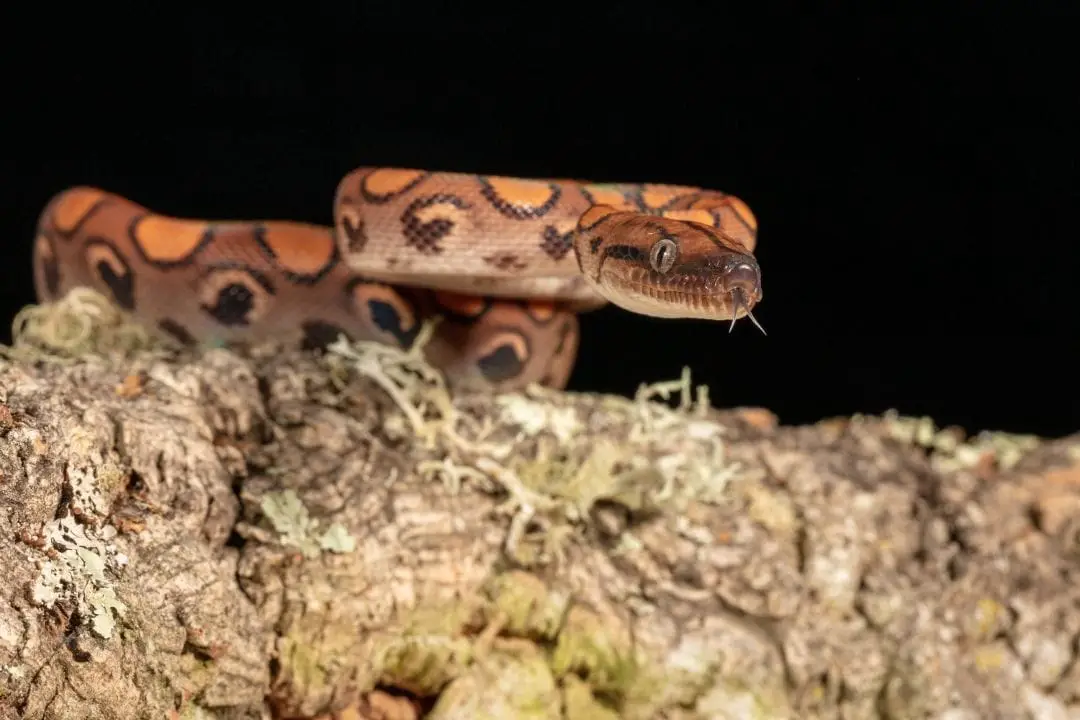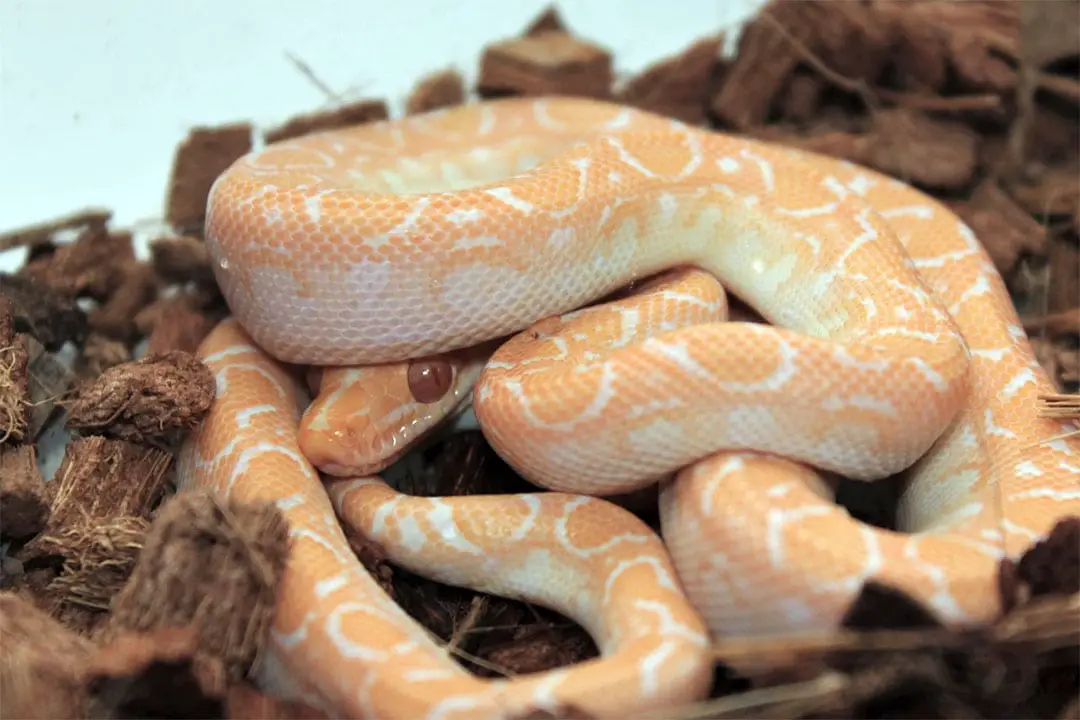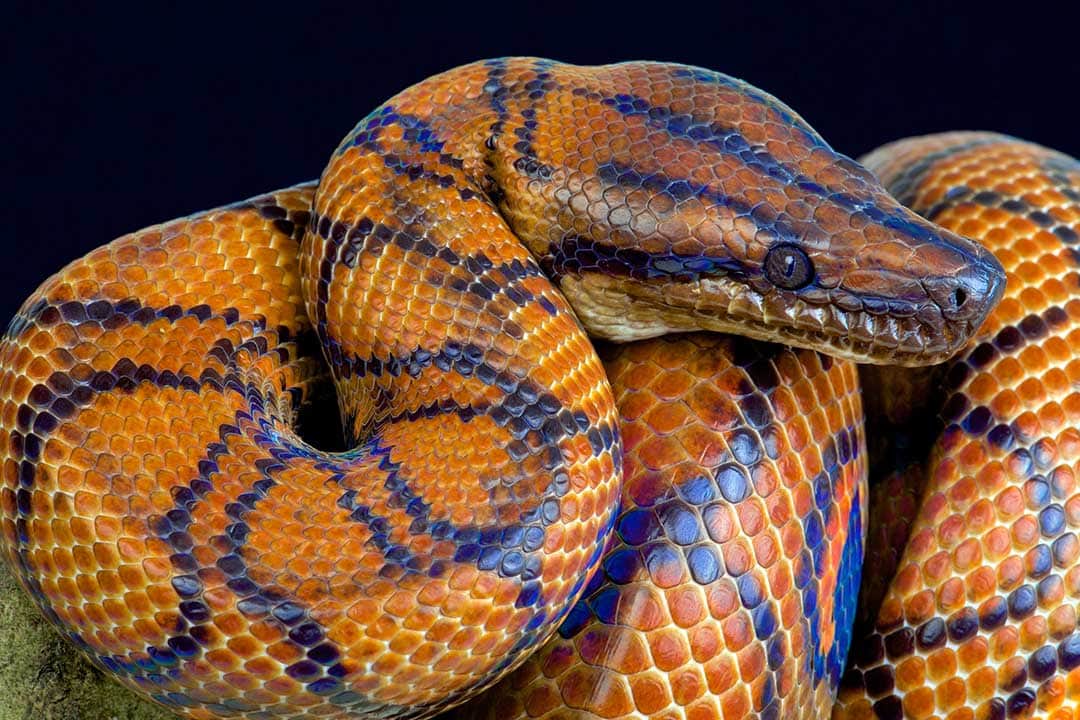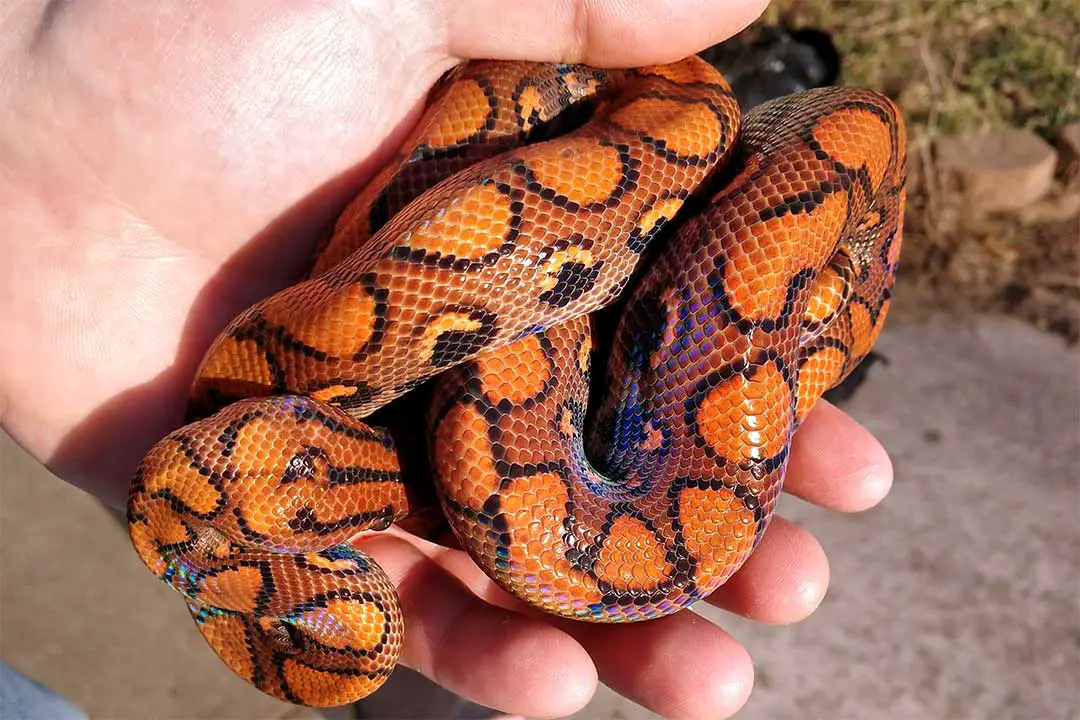The Brazilian rainbow boa (Epicrates cenchria) is loved in the pet trade for the beautiful iridescent scales that give the species its common name.
You may be wondering:
Are Brazilian Rainbow Boas Venomous?
Brazilial rainbow boas are not venomous, they are constrictors. Rather than venom, they use their powerful bodies to squeeze their prey until it dies. There are no venomous boas.
Venom in Snakes

Snakes generally kill prey via two major methods: venom and constriction. Some snakes will eat live prey, but this snakes tend to hunt prey that can be subdued and consumed without risking harm.
Constrictor snakes rely on catching and squeezing prey until it passes out and dies from a lack of blood flow.
This is a costly method of killing prey. It takes a lot of energy to constrict prey. It has been shown that constricting snakes will monitor the heartbeat of the prey so they can avoid using up too much energy to subdue prey. It can be very dangerous to take down prey like this.
A bad strike can leave a snake vulnerable to the teeth and claws of a potential meal.
Venomous snakes typically rely on a powerful venom to take care of subduing prey. Most snakes have a venom that is highly specialized to their typical prey.
There is a pretty wide variety in the snakes that have evolved venom delivered via front fangs.
Venom likely developed in reptiles from a singular common ancestor and developed into the wide variety of venoms found in nature today.
Venom is incredibly useful to snakes as both a method to subdue prey and also a defense mechanism. However, not all snakes have venom.
Even in snakes that possess venom, some do not possess either enough venom or a venom that can affect humans.
The primitive snakes, like the Brazilian rainbow boa, do not possess venom. They kill solely via constriction. See this article on how to tell if a snake is venomous or not.
Rainbow Boas
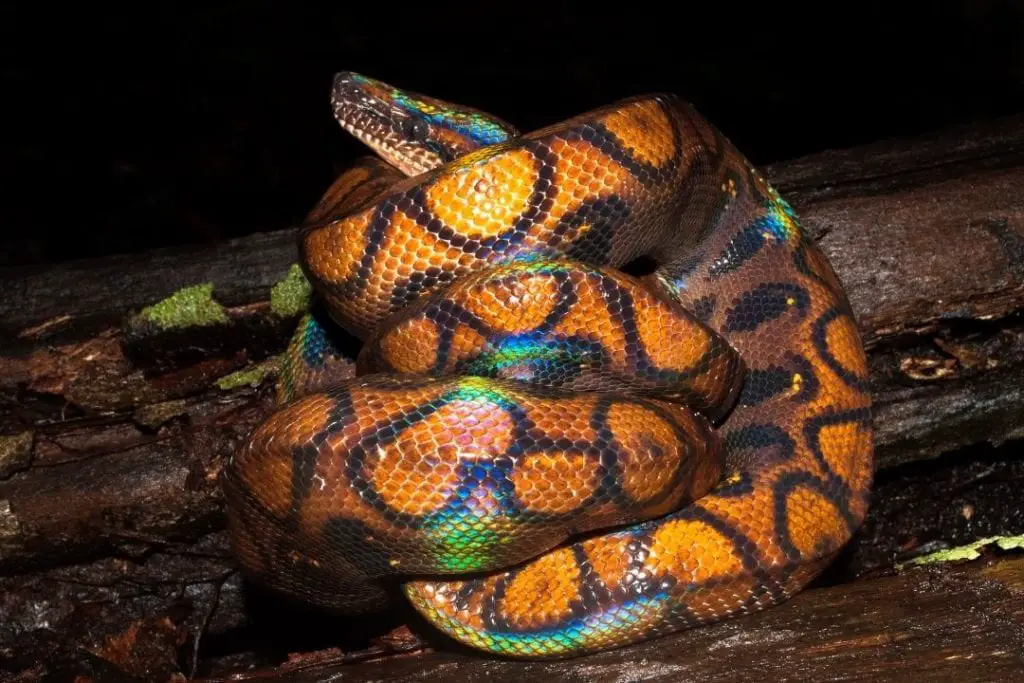
Boidae, the family that include rainbow boas, do not possess venom glands. The vast majority of boas constrict their prey to kill it.
Only the largest boas pose any threat to adult humans. Rainbow boas are not one of them. These snakes rarely top 6 feet in length.
Like the vast majority of snakes, they will prefer to flee from an encounter with a human.
While there have been cases of the larger boa species harming humans, most of these were cases of poor handling and a starving animal. Brazilian rainbow boas do not see even a newborn as something they can eat.
A large rainbow boa would find a rat to be a large meal. A human is much too large to register as prey.
These snakes can bite, but they are not harmful to humans. Most rainbow boa bites will not do much more than draw blood.
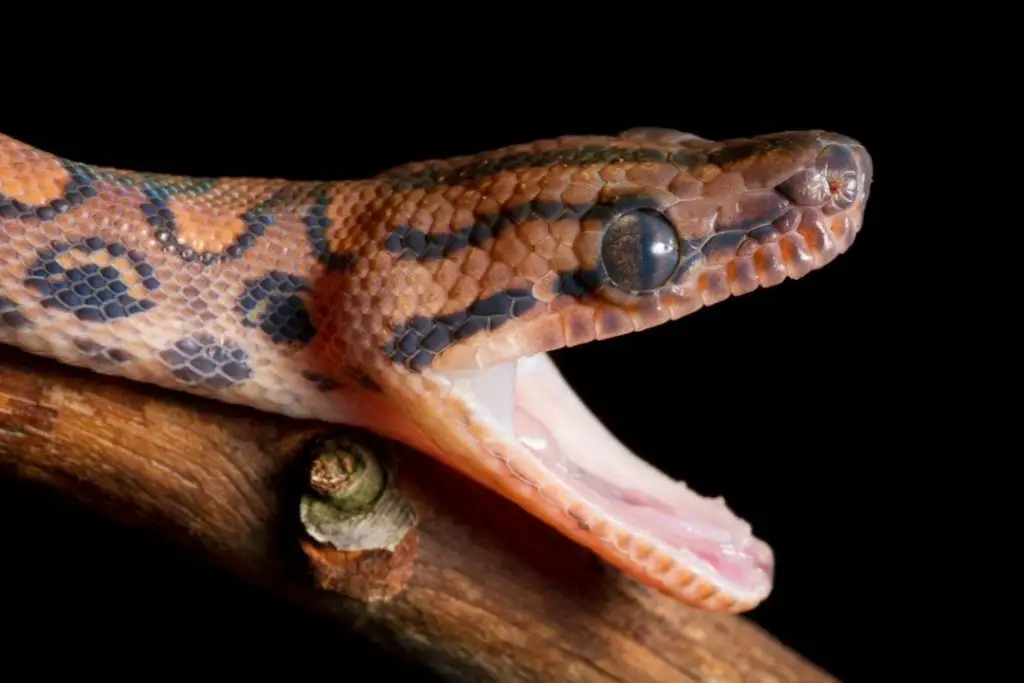
Most owners describe it as feeling like a bee sting or a cat scratch. You will normally be warned before a bite.
Rainbow boas will typically try to bluff by hissing or false striking to get humans to leave them alone. This is because biting puts the snake at risk of broken teeth and retaliation.
The only snakes that bite without warning are animals that have learned that warning does not work for defending themselves.
Babies can be flighty and defensive. It isn’t uncommon for a young snake to bite to defend itself. After all, they are very small and incredibly vulnerable to predators.
They will learn over time that you will not hurt them. This is achieved through gentle and consistent handling sessions, an important part of caring for rainbow boas in captivity.
Rainbow boas naturally calm down with age like most other snake species. Even if an adult has never been handled, it will be less defensive than a baby since it feels less vulnerable.
Defensive Bites
If you are not careful, you may suffer a mistaken feeding bite. Defensive bites are typically quick, while a feeding bite will see your snake holding on and trying to constrict.
This can happen because your hand is very close to the temperature of a rodent. If you have handled a rodent, whether alive or dead, you snake may smell it and assume your hand is a rodent.
If you have recently handled a rodent or rodent bedding, be sure you clean your hands thoroughly before you try to handle your snake.
You can also help reduce feeding bites by hook training you snake.
Just gently touch your snake with a hook before you reach in the enclosure for cleaning or handling your snake and it will learn that the hook means no meal.
If your snake does bite and constrict you, there are steps you can take to reduce damage to you and your snake.
First, stay calm and do not pull the snake off. Pulling the snake off will make your wounds worse and may injure or kill your snake.
A Brazilian rainbow boa has fairly fragile teeth and jaws that a human could easily break.
If your snake is trying to constrict you, try to unwrap it from you. If it is around your arm, you can use your other hand to try to loosen the coils.
If you are fast, you can also get your other hand under the coils and help keep the snake from squeezing down effectively.
Your snake will likely let you go quickly once it realizes you are too large to be a meal. If it is being stubborn, a small amount of cold water gently poured on the snake’s face should convince it to release you.
Some owners swear by mouthwash since the strong smell will make a hungry snake lose its appetite. Just be careful if you try this method.
Once your snake lets you go, place it back in its enclosure.
Just be careful not to teach it that biting you will make you put it back in its home faster. Snakes can learn and they will try to bite again of they are done with a handling session.
Conclusion
Brazilian rainbow boas are not venomous snakes. They kill via constriction. They are not dangerous to humans either. If you have any comments or questions, be sure to leave them below.
